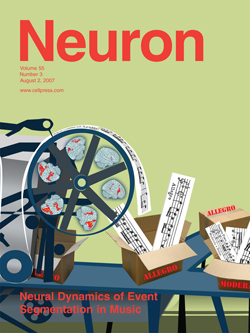
Baroque music for learning
The researchers caught glimpses of the brain in action using functional magnetic resonance imaging, or fMRI, which gives a dynamic image showing which parts of the brain are working during a given activity. The goal of the study was to look at how the brain sorts out events, but the research also revealed that musical techniques used by composers 200 years ago help the brain organize incoming information.
"In a concert setting, for example, different individuals listen to a piece of music with wandering attention, but at the transition point between movements, their attention is arrested, " said the paper's senior author Vinod Menon, PhD, associate professor of psychiatry and behavioral sciences and of neurosciences.
"I'm not sure if the baroque composers would have thought of it in this way, but certainly from a modern neuroscience perspective, our study shows that this is a moment when individual brains respond in a tightly synchronized manner, " Menon said.
The team used music to help study the brain's attempt to make sense of the continual flow of information the real world generates, a process called event segmentation. The brain partitions information into meaningful chunks by extracting information about beginnings, endings and the boundaries between events.
"These transitions between musical movements offer an ideal setting to study the dynamically changing landscape of activity in the brain during this segmentation process, " said Devarajan Sridharan, a neurosciences graduate student trained in Indian percussion and first author of the article.
No previous study, to the researchers' knowledge, has directly addressed the question of event segmentation in the act of hearing and, specifically, in music. To explore this area, the team chose pieces of music that contained several movements, which are self-contained sections that break a single work into segments. They chose eight symphonies by the English late-baroque period composer William Boyce (1711-79), because his music has a familiar style but is not widely recognized, and it contains several well-defined transitions between relatively short movements.

The study focused on movement transitions - when the music slows down, is punctuated by a brief silence and begins the next movement. These transitions span a few seconds and are obvious to even a non-musician - an aspect critical to their study, which was limited to participants with no formal music training.
The researchers attempted to mimic the everyday activity of listening to music, while their subjects were lying prone inside the large, noisy chamber of an MRI machine. Ten men and eight women entered the MRI scanner with noise-reducing headphones, with instructions to simply listen passively to the music.
In the analysis of the participants' brain scans, the researchers focused on a 10-second window before and after the transition between movements. They identified two distinct neural networks involved in processing the movement transition, located in two separate areas of the brain. They found what they called a "striking" difference between activity levels in the right and left sides of the brain during the entire transition, with the right side significantly more active.









